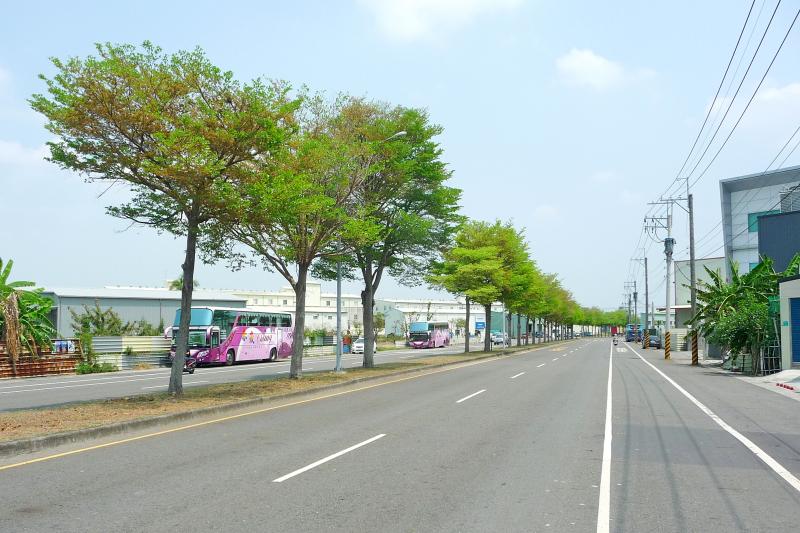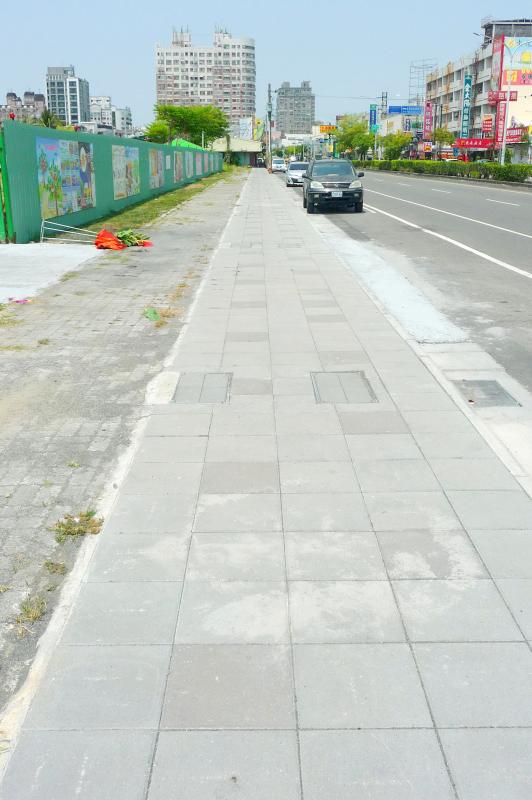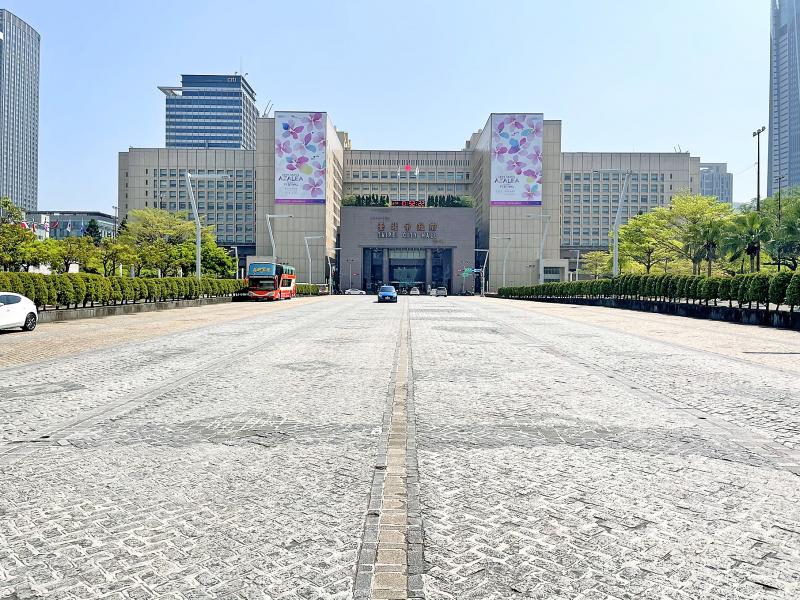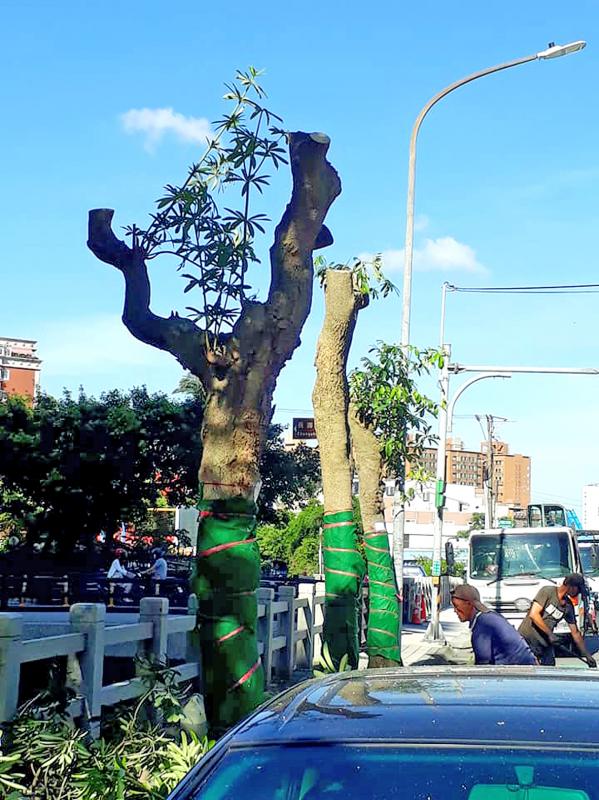It’s official: Trees are good for the mental health of city dwellers.
According to a study published in Scientific Reports at the end of last year, individuals living within 100m of a high density of street trees in Leipzig, Germany, were prescribed antidepressant prescriptions at a lower rate than those who didn’t have many trees in their neighborhood.
The study noted that more distant clusters of street trees didn’t appear to have any impact on antidepressant use, and that, even at 100m, the correlation was merely “marginally significant.” However, the researchers found, for individuals with low socio-economic status, trees no more than 100m from their homes “significantly reduced the probability of being prescribed antidepressants.”

Photo: Steven Crook
As the study puts it, “unintentional daily contact to nature through street trees close to the home may reduce the risk of depression, especially for individuals in deprived groups.”
The Leipzig researchers speculate that the key benefit of roadside trees isn’t that they inspire people to be more physically active. Instead, “Previous research has found that people whose homes had views of high amounts of diverse vegetation had lower stress and greater [psychological] restoration.”
None of this comes as a big surprise. Who doesn’t like trees? A 2011 study by Ihab Elzeyadi of the University of Oregon found that office workers able to see trees and nature from their desks took less sick leave than colleagues who couldn’t enjoy any view whatsoever.

Photo: Steven Crook
Trees and parks are especially important for people who live in Taiwan’s cities, because so few households have gardens. Unfortunately, the trees that do shade our sidewalks and roads aren’t well cared for, say local specialists.
SOIL COMPACTION
A July 30, 2017 post on the Facebook account of the Taiwan Greening Technology Association (wetrees.org) explains why urban trees are at particular risk in summertime: “When the soil around a tree is hardened, rainwater accumulates on the surface. The tree responds by growing fine, vigorous roots very close to the surface, because there’s an abundance of water there. However, when the sun is scorching, those fine roots dry out rapidly and die.”

Photo: Steven Crook
A tree that suddenly loses much of its water-absorption system can’t survive.
Whatever the weather, when soil becomes overly compacted, roots struggle to get nutrients, and the airflow and micropores that trees need to stay healthy are inhibited.
The cooling effect of street trees depends greatly on their density and maturity. On June 19, 2019, the Chinese-language United Daily News (UDN) reported that a few weeks earlier, staff from the Taiwan Forestry Research Institute had simultaneously measured afternoon shade temperatures at two locations in downtown Taipei: the leafiest stretch of Renai Road (仁愛路) and Zhongxiao East Road Section 3 (忠孝東路三段).

Photo: Cheng Ming-hsiang, Taipei Times
At the former, it was 31 degrees Celsius. At the latter, where tree cover is less extensive, the temperature was 2.7 degrees higher.
In addition to microclimate mitigation — which reduces the need for air-conditioning, and thus conserves electricity — street trees sequester carbon and reduce particulate matter in the air. Yet, UDN reported, “due to improper planning and poor maintenance, these effects are greatly compromised.”
UDN quoted Lin Po-hsiung (林博雄), an associate professor in the Department of Atmospheric Sciences at National Taiwan University, as saying that, after 2015’s Typhoon Soudelor toppled thousands of trees in Taipei, wind-tolerant species weren’t selected to replace them, and the growing environment was poor, so the results have been dismal.

Photo: Facebook screen grab
Trees in urban Taiwan face challenges on top of compacted soil, typhoons, droughts and extreme heat.
KILLING TREES
A 2019 study by Boston University scientists found that while urban trees grow faster than their countryside counterparts, because polluted air contains more nitrogen, they live shorter lives. Limited root space was named as a major reason for the higher mortality rate. Taiwan is even more cramped than Boston, so this is likely to be a common cause of street-tree deaths.
Nothing can be done about Taiwan’s high population density, but the number of trees entirely surrounded by asphalt or concrete — so that no soil at all is visible — is disgraceful. Sealing the surface like this can kill a tree and heightens the risk of flooding whenever there’s a rainstorm. Urban planners and road maintenance crews should be trained to preserve, not obliterate, “breathing space” around roadside trees.
In a Dec. 18, 2020 op-ed for CommonWealth magazine, Monica Kuo (郭瓊瑩), head of the Department of Landscape Architecture at Chinese Culture University, railed against the inappropriate trimming that’s inflicted on city trees whenever a typhoon bears down on Taiwan.
“The streetscape is left bald, and the birds that used to perch on the branches have disappeared,” she lamented. “Branches and leaves are just objects to be removed. Cutting and sawing is more efficient than pruning slowly. Also, when sidewalks are ‘improved,’ street trees are often treated as obstacles rather than living organisms.”
Trees, Kuo wrote, provide city dwellers with “an invaluable and healing visual and spiritual experience.”
Kuo expressed a hope that Taiwan can transform itself “from an executioner who fell trees in the past, to a clinician who cares for and loves trees.”
Some statistics suggest that, over the past decade, Taiwan’s cities have gained tree cover on public land. However, this progress may have been negated by the loss of mature trees felled when privately-owned plots are sold to developers.
A quick look at Yongkang District (永康) in Tainan suggests that local governments often miss opportunities to increase the tree count.
When Dawan East Road (大灣東路) was built several years ago, most of the plots on the south side of the road were undeveloped. The authorities could easily have planted trees there, in addition to the 300-plus that grow on the median.
Trees on a median are better than no trees at all, of course, but they do nothing to make the sidewalk a place where people might like to walk or jog. Because they shade the center of the road, they’re no help to motorcyclists trying to stay cool while waiting at a red light.
The landscape on Yongda Road Sec 2 (永大路二段), where Tainan City Government is building an ice-skating rink, is far more dispiriting. A brand-new stretch of sidewalk, more than 100m long, soaks up heat on sunny days. There’s not a tree in sight, and there’s no excuse for this.
Steven Crook, the author or co-author of four books about Taiwan, has been following environmental issues since he arrived in the country in 1991. He drives a hybrid and carries his own chopsticks.

Last week Joseph Nye, the well-known China scholar, wrote on the Australian Strategic Policy Institute’s website about how war over Taiwan might be averted. He noted that years ago he was on a team that met with then-president Chen Shui-bian (陳水扁), “whose previous ‘unofficial’ visit to the US had caused a crisis in which China fired missiles into the sea and the US deployed carriers off the coast of Taiwan.” Yes, that’s right, mighty Chen caused that crisis all by himself. Neither the US nor the People’s Republic of China (PRC) exercised any agency. Nye then nostalgically invoked the comical specter

April 15 to April 21 Yang Kui (楊逵) was horrified as he drove past trucks, oxcarts and trolleys loaded with coffins on his way to Tuntzechiao (屯子腳), which he heard had been completely destroyed. The friend he came to check on was safe, but most residents were suffering in the town hit the hardest by the 7.1-magnitude Hsinchu-Taichung Earthquake on April 21, 1935. It remains the deadliest in Taiwan’s recorded history, claiming around 3,300 lives and injuring nearly 12,000. The disaster completely flattened roughly 18,000 houses and damaged countless more. The social activist and

Over the course of former President Ma Ying-jeou’s (馬英九) 11-day trip to China that included a meeting with Chinese Communist Party (CCP) leader Xi Jinping (習近平) a surprising number of people commented that the former president was now “irrelevant.” Upon reflection, it became apparent that these comments were coming from pro-Taiwan, pan-green supporters and they were expressing what they hoped was the case, rather than the reality. Ma’s ideology is so pro-China (read: deep blue) and controversial that many in his own Chinese Nationalist Party (KMT) hope he retires quickly, or at least refrains from speaking on some subjects. Regardless

Approaching her mid-30s, Xiong Yidan reckons that most of her friends are on to their second or even third babies. But Xiong has more than a dozen. There is Lucky, the street dog from Bangkok who jumped into a taxi with her and never left. There is Sophie and Ben, sibling geese, who honk from morning to night. Boop and Pan, both goats, are romantically involved. Dumpling the hedgehog enjoys a belly rub from time to time. The list goes on. Xiong nurtures her brood from her 8,000 square meter farm in Chiang Dao, a mountainous district in northern Thailand’s